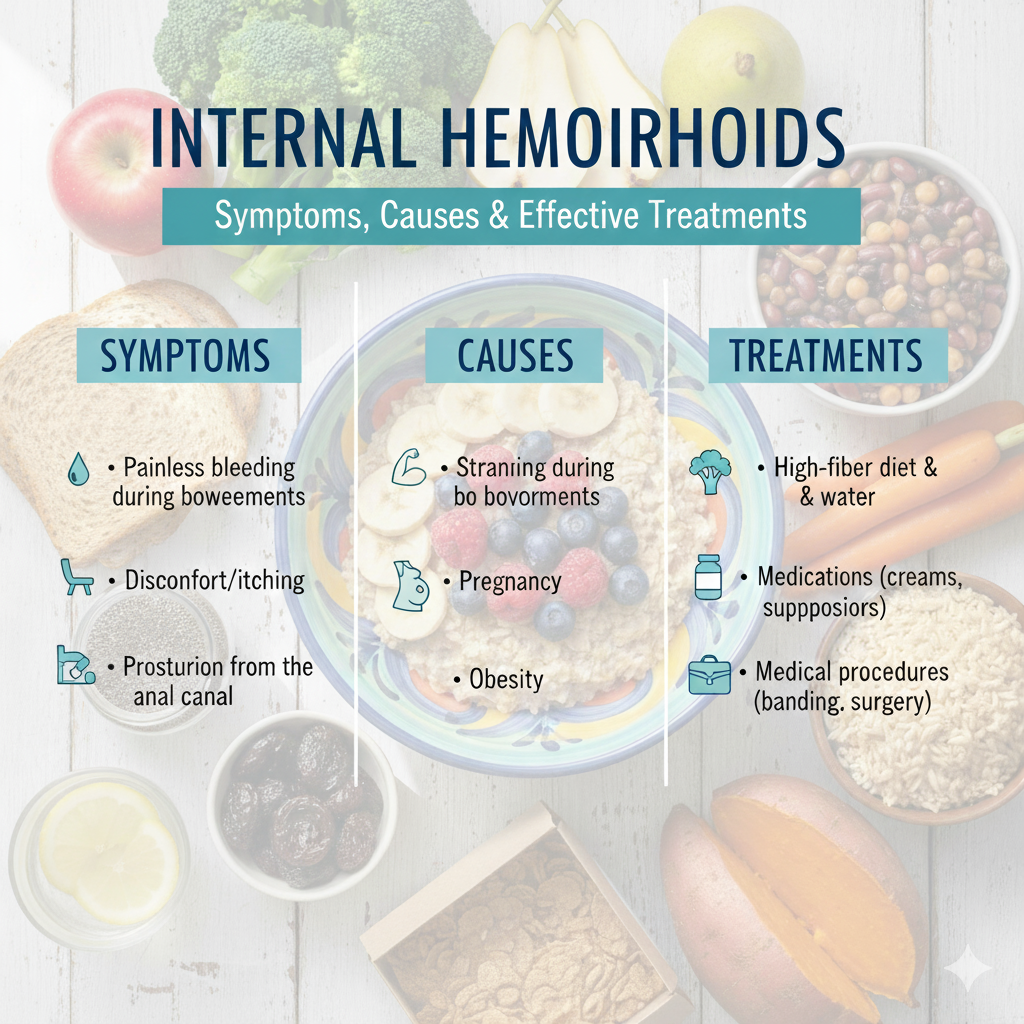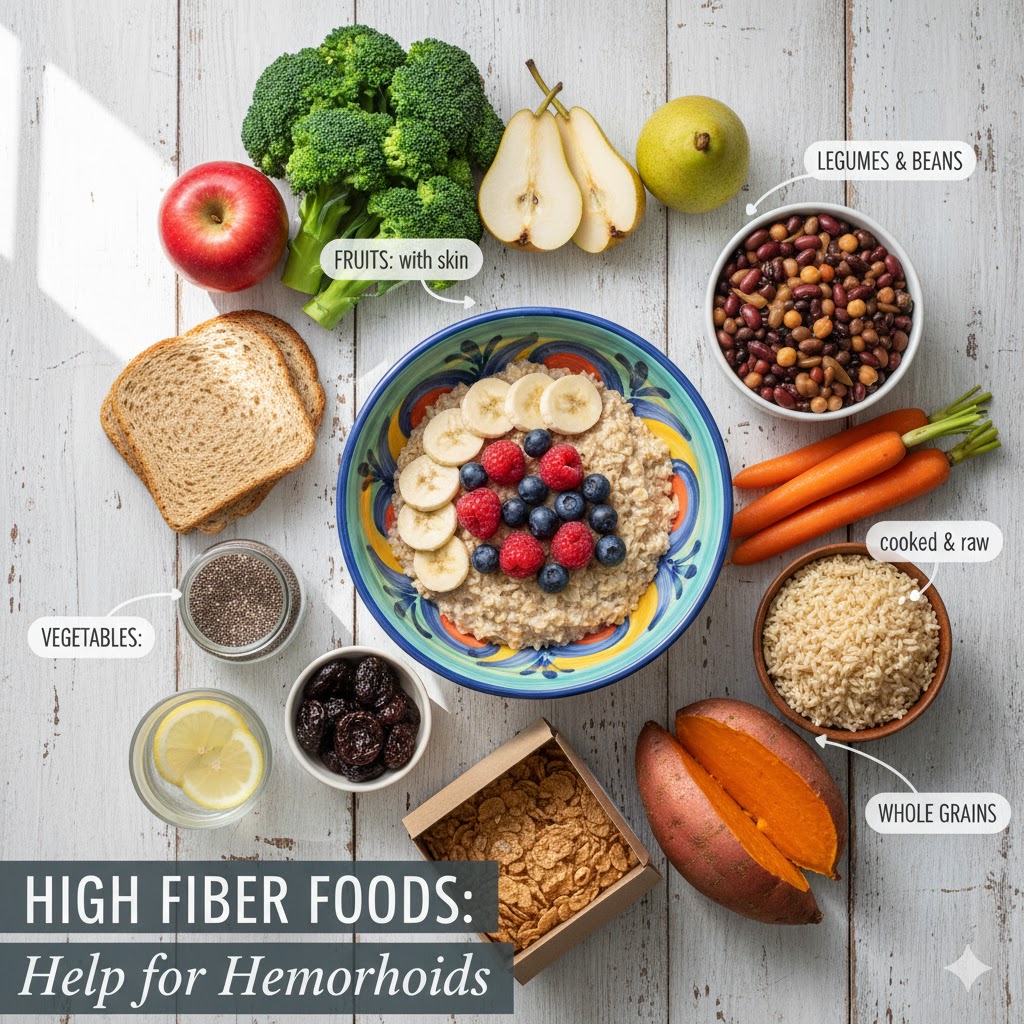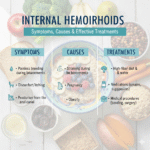If you’ve ever felt a strange pressure in your rectum, experienced sudden rectal bleeding, or discovered a “fullness” feeling down there you’re not alone. Millions of people deal with internal hemorrhoids, but most quietly suffer because the symptoms can feel embarrassing or confusing.
This guide breaks everything down in a friendly, simple way. No judgment, no medical jargon overload just the answers you actually need to understand what’s going on with your body and how to fix it.
Let’s dive into the symptoms, causes, treatments, and the questions most people are afraid to ask out loud.

What Are Internal Hemorrhoids?
Internal hemorrhoids are swollen veins inside the rectum. You can’t see them, you usually can’t touch them, and in the early stages, you may not even feel them. They’re different from external hemorrhoids, which form under the skin around the anus.
Here’s a simple way to think about it:
- Internal hemorrhoids = inside the rectum (usually painless)
- External hemorrhoids = outside the anus (can be painful)
For a deeper medical overview, check the Mayo Clinic’s explanation here.
Internal Hemorrhoids Symptoms (Most Common)
Internal hemorrhoids can be sneaky because they often don’t hurt especially in the early stages. But they do send signals.
1. Painless Rectal Bleeding
This is the most common symptom. You may notice bright red blood:
- On toilet paper
- Dripping into the toilet bowl
- On the stool surface
It’s alarming, but internal hemorrhoid bleeding is typically painless because there are fewer pain nerves inside the rectum. For rectal bleeding information, see the MedlinePlus overview here.
2. A Feeling of Fullness or Pressure
You may feel like:
- Something is “blocking” the rectum
- You need to pass a stool even when you don’t
- There’s internal swelling or heaviness
This fullness is caused by swollen veins pushing into the rectal space.
3. Mucus Discharge
Some people notice a thin mucus discharge, especially after a bowel movement.
4. Itching or Irritation
Because mucus can irritate the skin around the anus, internal hemorrhoids sometimes cause mild itching.
5. Prolapse (When Internal Hemorrhoids Push Out)
This happens when the hemorrhoid inside your rectum slips down and bulges out of the anus. You may see or feel a soft bump. Prolapsed hemorrhoids can still be painless, but they often cause:
- Discomfort
- Itching
- Minor pain
- Bleeding
What Causes Internal Hemorrhoids?
Internal hemorrhoids develop when pressure increases in the lower rectum. Think of it like varicose veins, but in a more sensitive location.
Common causes include:
- Straining during bowel movements (the #1 cause)
- Chronic constipation
- Sitting on the toilet too long
- Pregnancy (due to pressure + hormonal changes)
- Low-fiber diet
- Heavy lifting
- Obesity
- Chronic diarrhea
- Genetics
The Cleveland Clinic outlines causes and risk factors here.
Do Internal Hemorrhoids Go Away?
Yes — many internal hemorrhoids go away on their own, especially mild ones. But this only works if you remove the cause (constipation, straining, low fiber intake, etc.).
Moderate or severe internal hemorrhoids don’t typically disappear without treatment.
How to Treat Internal Hemorrhoids (At Home + Medical Options)

Let’s look at the best ways to treat internal hemorrhoids — starting with simple home remedies and moving to medical procedures when needed.
1. Increase Fiber Intake
Fiber softens stool and helps you pass it without straining. Aim for:
- 25–30 grams of fiber daily
Great sources:
- Oats
- Chia seeds
- Fruits & vegetables
- Whole grains
- Legumes
Harvard’s guide on fiber is helpful here.
2. Drink More Water
Your digestive system needs water to form soft, easy-to-pass stools. Dehydration makes hemorrhoids worse.
3. Try a Sitz Bath
A sitz bath is a warm shallow bath for your backside. It helps reduce swelling and soothes irritation.
Follow the Cleveland Clinic’s sitz bath instructions here.
4. Use Fiber Supplements
Psyllium husk (Metamucil) is one of the most effective natural treatments.
Learn about psyllium here.
5. Over-the-Counter Medications
- Hydrocortisone creams
- Witch hazel pads
- Stool softeners
6. Medical Treatments for Internal Hemorrhoids
If home remedies don’t help, doctors often recommend:
Rubber Band Ligation
This is the most common and effective treatment. A small band is placed around the hemorrhoid to cut off blood flow. It shrinks and falls off naturally.
Johns Hopkins explains it well here.
Sclerotherapy
A solution is injected into the hemorrhoid to shrink it.
Infrared Coagulation
A beam of infrared light burns the hemorrhoid’s blood supply.
Hemorrhoidectomy (Surgery)
This is only for severe or persistent cases.
When Should You See a Doctor?
You should seek medical help if you experience:
- Rectal bleeding that doesn’t stop
- Severe pain
- Dark or tarry stools
- Unexplained weight loss
- Changes in bowel habits
These symptoms could signal something more serious than hemorrhoids.
ICD-10 Code for Internal Hemorrhoids
The ICD-10 code most commonly used is:
K64.0 — First degree hemorrhoids
You can find the full list of hemorrhoid ICD-10 codes here.
How to Prevent Internal Hemorrhoids
- Eat more fiber
- Avoid straining
- Don’t sit on the toilet too long
- Stay hydrated
- Exercise regularly
- Respond to bowel urges quickly
A little lifestyle change goes a long way!
Frequently Asked Questions
1. How do you get rid of internal hemorrhoids fast?
Start with fiber, water, and sitz baths. For rapid relief, rubber band ligation is the quickest medical option.
2. Can internal hemorrhoids be felt?
Normally, no. But if they prolapse, you may feel a soft lump outside the anus.
3. Are internal hemorrhoids painful?
Not usually. Pain tends to occur only when they prolapse or become thrombosed.
4. Can internal hemorrhoids cause bleeding?
Yes — bright red, painless bleeding is the most common symptom.
5. Do internal hemorrhoids go away?
Mild ones often do, especially with lifestyle changes.
External Resources & References
- Mayo Clinic – Hemorrhoids Overview
- Cleveland Clinic – Hemorrhoids Diagnosis & Treatment
- MedlinePlus – Rectal Bleeding
- Harvard Health – Fiber Guide
- Cleveland Clinic – Sitz Bath Instructions
- Johns Hopkins – Rubber Band Ligation
- ICD10Data – Hemorrhoids Codes
- WebMD – Psyllium Fiber
This article is for informational purposes only and is not medical advice. Always consult a healthcare professional if you suspect any medical condition.







Leave a Reply